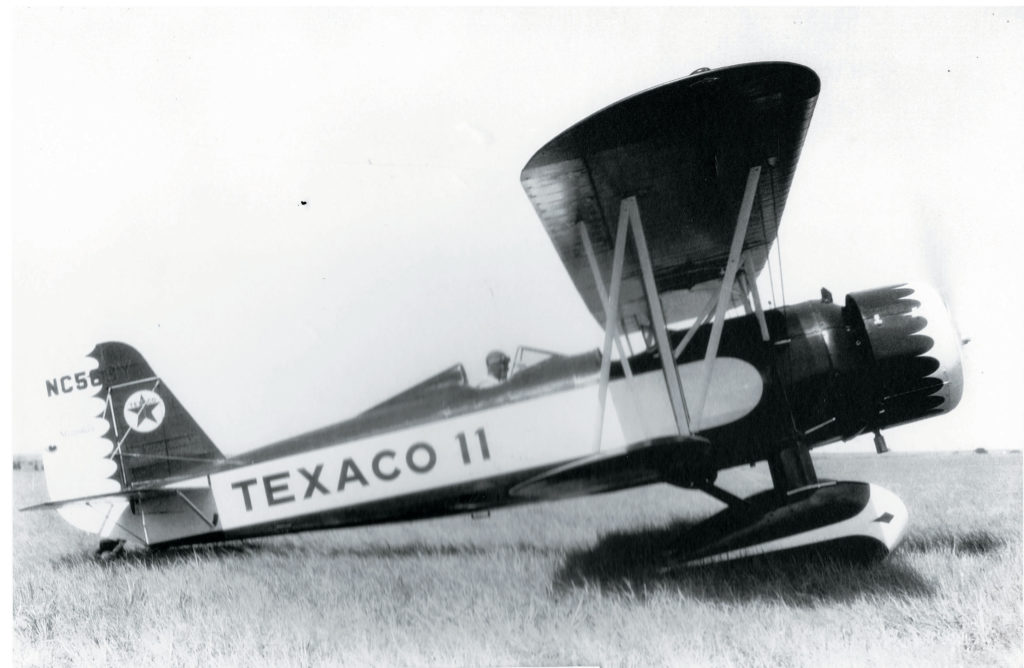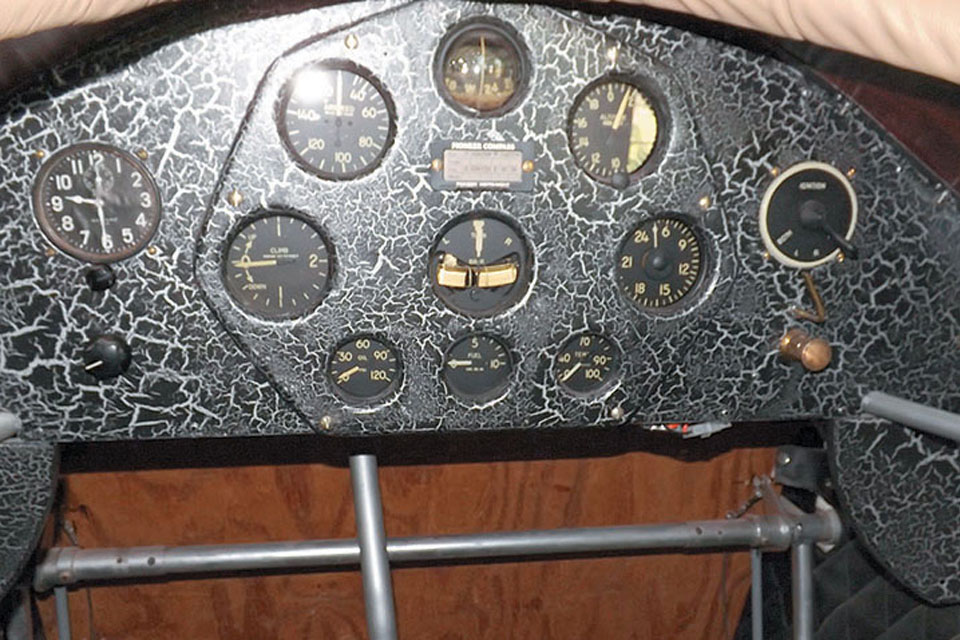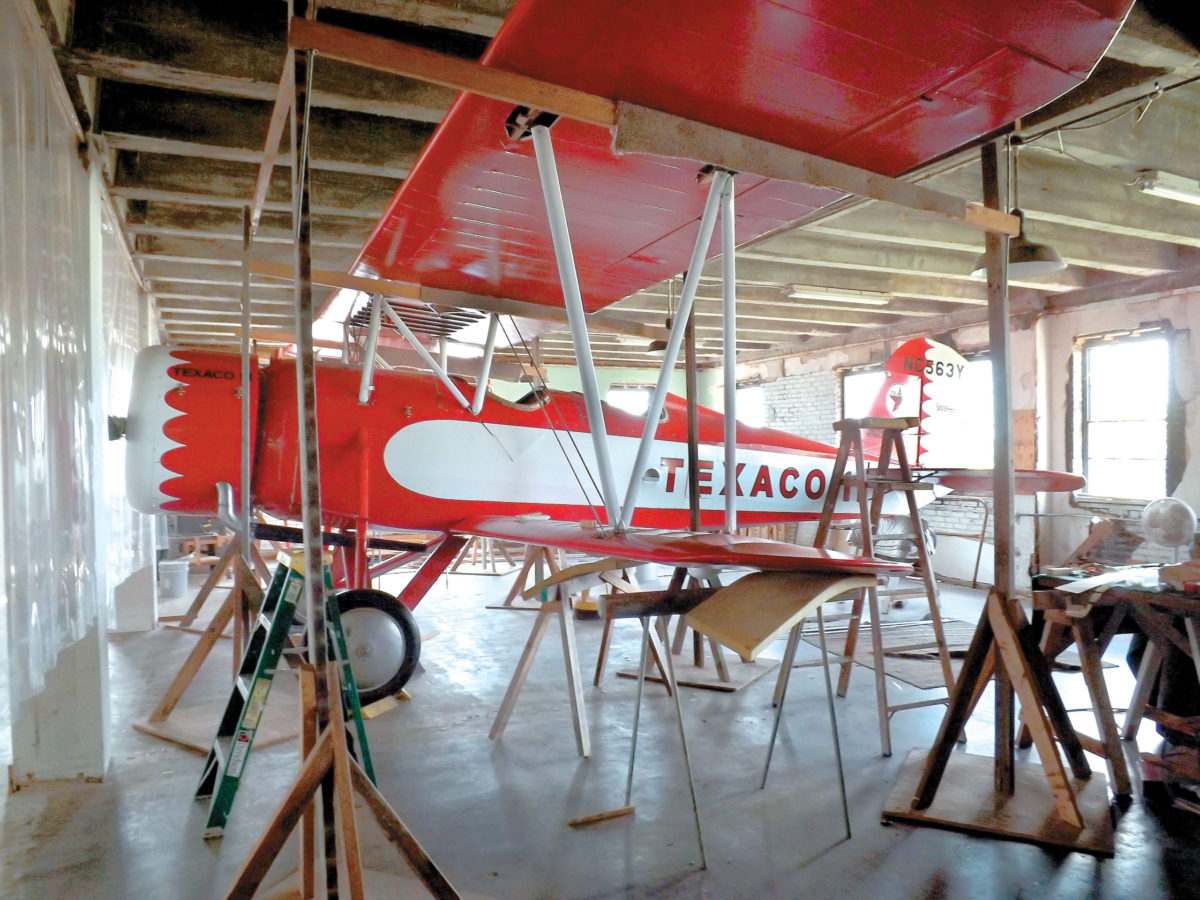In 1998 the Kansas Aviation Museum (KAM) in Wichita acquired the welded- steel fuselage and three boxes of parts from a derelict Stearman Model 4D Junior Speed Mail biplane. Those remnants had been rescued in 1971 from destruction at a salvage yard in Tucson, Arizona, by Bruce Bissonette, an aviation writer and historian living in El Paso, Texas.
The airplane was one of 40 Model 4s manufactured by the Stearman Aircraft Company in Wichita, Kan. In 1929 designer Lloyd Stearman and aeronautical engineer Mac Short had combined their talents to create the aircraft that many Stearman enthusiasts believe marked the zenith of Lloyd’s creative ability: the Model 4 series. In addition to replacing the larger but aging M-2 Speed Mail, the Model 4 was aimed at filling a gap in the company’s product line between the large LT-1 cabin biplane and the smaller Model C3R “Business Speedster.” The first production version, the C4A, spawned a family of biplanes powered by various air-cooled radial engines that were designated as the Junior Speed Mail. These included the 4CM, 4CM-1, 4D, 4E and the one-of-a-kind 4DX.
Although the stock market debacle of 1929 had devastated the general aviation industry in America (and Wichita in particular), a few major corporations could still afford to buy new aircraft to upgrade their fleets. The museum’s Stearman initially began its long and multifaceted career by serving with the Texas Company, recognized as a leading producer of petroleum products, including aviation gasoline. On August 7, 1931, company pilot J.D. “Duke” Jernigan took delivery of the airplane at the Wichita factory. Manufactured as Stearman constructor number 4027 and registered as NC563Y, it proudly displayed “Texaco 11” on the sides of its fuselage, looking resplendent in the oil company’s livery of brilliant red, accented by bright white.
Walt House, KAM’s historian, noted, “Of the 40 Model 4 biplanes built, eight have been restored to flying condition and two have been rebuilt for static display in museums,” including NC563Y. In addition to the one in Kansas, three other Model 4Ds are awaiting restoration in the United States. House acknowledged that restoring an 82-year-old airplane to its former glory has been challenging. Lon Smith, KAM’s director, described the Stearman’s rebirth as a “testament to the devotion and dedication of our hardworking volunteers, their attention to the perfection of the restoration, their love of the institution” and its mission to preserve and promote Wichita’s rich aviation heritage.

The turning point in the project came in 2005, when the Women of Wichita donated $20,000 to launch NC563Y’s restoration. The money “allowed the restoration shop to purchase all of the necessary supplies, materials, parts, dope and fabric to complete the project,” House said. That year work began in earnest, and has since moved forward at a steady pace. Both House and Smith credit progress to a team of skilled artisans—ranging in age from 60 to 87—who have volunteered their time and expertise, collaborating with local shops and suppliers.
Like so many biplanes built during the late 1920s and early ’30s, NC563Y was eventually relegated to service as an aerial applicator, or crop-duster. Leading up to America’s entry into WWII, the aging but rugged Stearman was flown by a number of operators, and its airframe underwent major modifications.
During its rough-and-tumble life as a duster, the Stearman’s fuselage suffered a number of alterations and repairs. For example, during restoration it was determined that the lower longerons were nearly 3 inches out of alignment where the fixed landing gear was attached to the fuselage. An automotive body shop allowed the team to use its specialized equipment to realign the longerons. In addition to that problem, a number of steel tubes were missing and had to be fabricated. Once that was done, the fuselage was sandblasted, primed and painted.
Texaco’s Model 4D was a well-proportioned, balanced design with an upper wingspan of 38 feet and a lower span of 28 feet. The biplane’s 9-cylinder Pratt & Whitney R-985 Wasp Junior radial engine produced a bellowing 300 hp and was enclosed in a highly efficient pressure cowling. Developed during the late 1920s by the National Advisory Committee for Aeronautics, the cowl improved cylinder cooling while also reducing drag and increasing speed.
Used primarily as an executive transport during 1931-32, the airplane accumulated 1,100 hours in the air before it was repainted in 1933 and renamed Texaco 14. The venerable Stearman remained in service with the Texas Company for another four years before being sold to Hangar Six, Inc., a well-known fixed base operator in San Antonio, Texas.

After serving numerous crop-dusting outfits in Mississippi, the well-worn biplane was sold yet again, this time to the recently created Tennessee Valley Authority in November 1941. During its TVA service, the Model 4D joined three other Stearmans that were modified to fly mosquito patrols from Muscle Shoals, Ala. These airplanes were used chiefly to spray insecticides.
In 1948 NC563Y was sold to another aerial applicator, Carberry Dusters, based in Fresno, Calif., where it served alongside other Model 4 biplanes well into the early 1960s. According to FAA records, it was finally salvaged on May 18, 1965, after accumulating more than 3,000 flying hours since new.
House said that by the time KAM accepted the airplane, all four wing panels and the upper wing center section had long since disappeared. The restoration team fabricated those assemblies “from scratch in our shop,” he noted, “along with the right side horizontal stabilizer and elevator.”
The same attention to authenticity and detail that the team devoted to the airframe was applied to restoring the open cockpits. The instrument panels, seats, upholstery and ancillary furnishings were replicated in KAM’s shops without access to any factory drawings, which were unavailable. Instead, artisans re-created the drawings based on dimensions of other existing Model 4Ds. Much of that detailed work was accomplished under the able direction of the Stearman’s project leader, Gerry Sibley.
Before final assembly began, the airframe was covered in grade A cotton fabric similar to that used by the Stearman factory in 1931. The fabric was then sprayed with four coats of clear butyrate dope, followed by four coats of silver and five coats of red and white, to match the original Texaco scheme as accurately as possible. Finally, decals were applied to complete the Stearman’s transformation. After eight years and more than 9,000 hours of work, the biplane was at last ready for display. According to Smith, the exhibit is slated to open to the public in May 2014.
Originally published in the November 2013 issue of Aviation History. To subscribe, click here.





